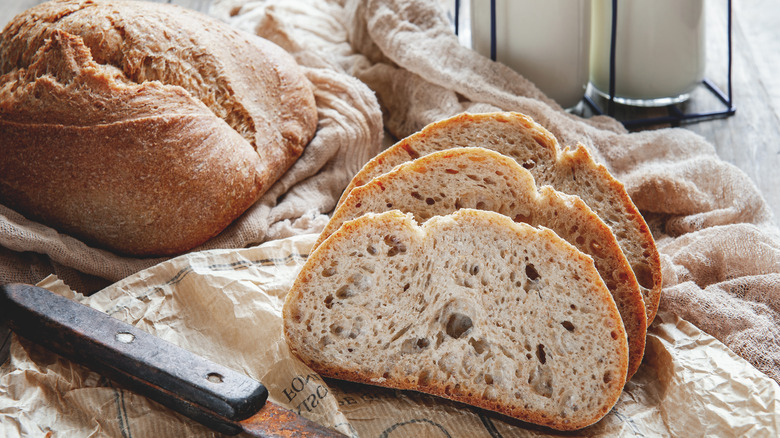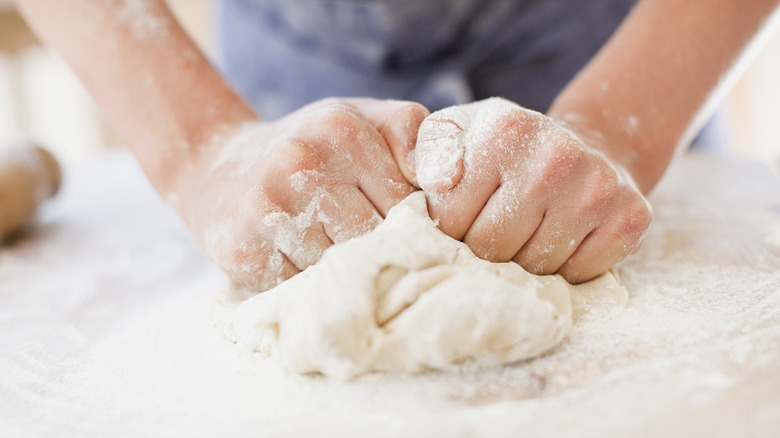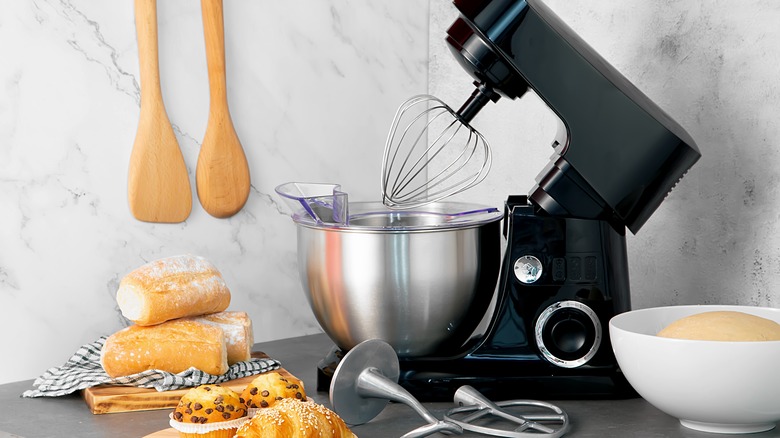The Biggest Mixer Mistake You're Making With Bread Dough
You may be one of the many people who began baking during the pandemic. Perhaps out of boredom or because you were in need of a new hobby, but we would guess mainly due to the extra time on your hands. Whether you found yourself whipping up cookies and cupcakes or deep into the world of bread baking, one thing is for certain, you were not alone in the adventure. And when the lockdowns lifted and people ventured back to work, many kept on baking.
According to PR Newswire, Marketing Communications Company Hunter conducted research in which they found that people are continuing to cook and bake more. Of those who responded to the survey, 51% said they have started cooking more since the pandemic, and 41% admit to baking more. If you are one of those who started baking bread, or you want to try your hand at it now, you should learn how to make the most of your stand mixer so that you can avoid some common mistakes.
Over-kneading dough is a problem
The biggest mistake people make when using a stand mixer for making bread is over-kneading the dough. A stand mixer is great for kneading the dough for you, but using the mixer at too high a speed can damage your machine. KitchenAid suggests using speed setting two, and kneading the dough for about two minutes to mix the ingredients together. Then, you should turn off the machine to scrape the dough down the sides of the bowl and continue mixing for another three to five minutes at the same speed. This will help your dough mix properly without harming your machine. You should check your own mixer's manual to determine the recommended setting for kneading dough.
Aside from damaging your machine, if you mix too fast or too long, you can over-knead the dough, which will make the dough feel tight and tough. This dough won't stretch properly, so it will tear as you try to shape it. This is why you should check your dough often as you mix it, and follow your machine's manual.
Under-kneading also causes dough issues
Of course, the opposite problem of over-kneading the bread dough is under-kneading it. Kneading dough is an important step in the baking process because it helps to develop the gluten network in the dough, which gives bread its structure and chewy texture. During kneading, the proteins in the flour are activated and form bonds, creating a stretchy dough. This traps the carbon dioxide produced by yeast, allowing the dough to rise, resulting in bread. Kneading also helps to distribute ingredients evenly throughout the dough, which can affect the flavor, texture, and appearance of your bread.
If your stand mixer isn't set to the right speed, you are using the wrong attachments, or if you don't allow it to mix the bread dough long enough, you will get a dough that is not kneaded enough. This will result in bread that doesn't rise and will result in a flat shape. This bread will easily fall apart and it certainly won't taste how you'd want it to.


